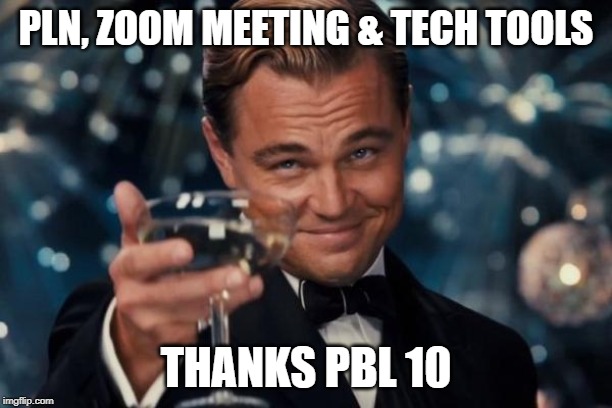The ONL has been one of the best courses I have been on. The most important things that I take with me from the course are as follows:
- Structure is everything: a good course must be mapped out well. Introduction is key, availability and access to learning materials is crucial and there must be a great facilitator and co -facilitator to steer the ship in unfamiliar territory.
- Time management is key, if you plan ahead and structure your meetings you get so much more out of the course and the day. At the end of the course, you feel validated.
- Invest time in participation to ensure you get most of the course. Engage with the content, the meetings and reflect on your personal goals in the blog.
I enjoyed using the Zoom platform as well as using a new tool for every topic. Before starting the ONL, I was unaware of Padlet, Canva, Google slides and the Meme generator. I am happy to report that I am now using these tools to create interactive, fun and collaborative learning experiences for both my students and my staff.
My initial thoughts regarding the technological tools were nervy and I was a little scared to lead a topic. This was alleviated by having co-leaders, having someone to lean on was comforting and the experience turned out to be enjoyable and empowering. My involvement with the ONL has increased my knowledge on technological tools, increased my understanding of the value of collaborative learning. Most importantly, I see the value in developing personal and professional networks.
PBL 10 group members have been fantastic to work with, the ideas shared, experiences discussed, and the knowledge created has made the course relevant and enjoyable.
I WOULD DEFINITLEY RECOMMEND THIS COURSE TO ALL ACADEMICS!
How will the ONL improve my teaching practice?
- I was always aware of the Community of Inquiry; however, I will ensure I always review this to ensure my courses consider the different presences to provide a holistic student and facilitator experience.
- Collaboration is much better than group work, collaboration involves much more planning to include all group member and the assessments used involve a greater level of collective engagement and transparency.
- Accountability is something a teacher/facilitator is generally assigned. However, when working collaboratively, accountability for completing tasks can be assigned to learners, in this way rotating leadership roles, allowing for organisation and coordination skills to be enhanced.
Overall the ONL experience was exceptional. I have really enjoyed working with passionate and enthusiastic academics from all over the world. THE PBL 10 experience is what I hope to provide to my students.
Thank you PBL 10
References
Cleveland-Innes, M. & Wilton, D. (2018). Guide to Blended Learning. Burnaby: Commonwealth of Learning
Salmon, G (2013) The Five Stage Model. [Homepage] http://www.gillysalmon.com/five-stage-model.html
Vaughan, N. D., Cleveland-Innes, M., & Garrison, D. R. (2013). Teaching in blended learning environments: Creating and sustaining communities of inquiry. Edmonton: AU Press. The whole book as PDF
